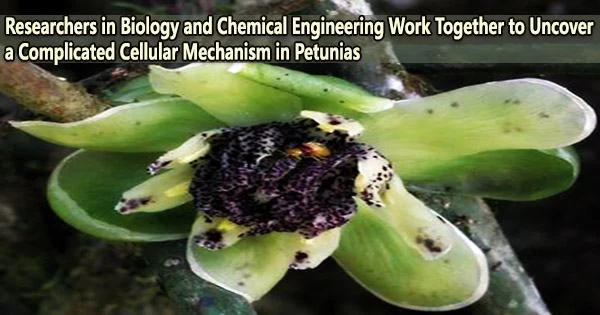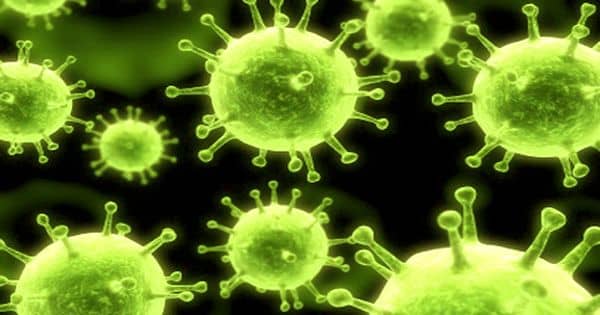A team of scientists from Purdue University recently published research in Nature Communications, and at one point, the conventional scientific opinion might have deemed it unnecessary. The ramifications of climate change have now increased the necessity for this field of study.
VOCs, a class of smell chemicals, are released by flowers (VOCs). The Purdue scientists identified a protein that is essential for petunias to release volatiles for the first time in a paper they released earlier this year. The paper was chosen by the editors of the magazine for the “plants and agriculture” part of the highlights homepage.
Natalia Dudareva, who led the study, and her longtime collaborator John Morgan had suggested years ago in grant proposals that molecular processes could be involved in VOC emission. Both times, the grant reviewers advised against further investigation because the solution was as simple as diffusion.
“We failed twice because people did not believe us,” said Dudareva, director of the Center for Plant Biology and Distinguished Professor of Biochemistry. “We decided we have to have proof that it’s not simple diffusion, that molecular mechanisms are involved.”
The new research expands on discoveries made by the Dudareva-Morgan partnership that were revealed in 2015 and 2017 and that demonstrate how biology aids in controlling the release of fragrance molecules from plants.
The latest work, largely financed by the National Science Foundation and the U.S. Department of Agriculture, focuses on how volatiles traverse the cell wall, the barrier that divides the cellular core from a plant’s outermost protective covering, the cuticle.
We failed twice because people did not believe us. We decided we have to have proof that it’s not simple diffusion, that molecular mechanisms are involved.
Natalia Dudareva
“We were looking at whether or not there are proteins that facilitate the transport of these small organic molecules across the cell wall layer,” said Morgan, a professor of chemical engineering. “The best analogy is to the transport of oxygen in muscle tissue by a protein called myoglobin.”
Volatile organic chemicals are small molecules that have low water solubility. The cell wall, however, is a water-filled environment. This slows the diffusion rate of VOCs because their concentrations cannot build up very high.
“What happens is a protein can bind a lot of these molecules inside a non-waterlike cavity, and it improves or increases the net transport rate,” Morgan explained.
The work has important practical ramifications that affect everything from environmental health to business operations. Now, plants emit 10 billion metric tons of carbon annually, and this amount will rise as global warming continues. Floral volatiles are widely employed in aromatherapy and the cosmetics sector, and they also aid in protecting plants from environmental challenges.
“And our diet depends on insect-pollinated plants,” Dudareva said. With global warming, flowers may start blooming earlier, before insects are ready to begin pollination.
In their 2015 paper, the team described calculations that had established the volatile content required to maintain the experimentally obtained floral emission rate. The paper was published in the journal Trends in Plant Science. As chemists use the millimolar scale to measure substances with large numbers of molecules or atoms, the concentration reached this range.
“These compounds will accumulate inside membranes and such high concentration will destroy membranes and destroy the cell,” Dudareva said. This left a clear-cut conclusion: simple diffusion would be impossible.
The initial work had been calculated for snapdragons. But, the Purdue scientists chose petunias for their most recent investigation because, in contrast to snapdragons, they can be genetically altered to examine how certain genes affect the emission process.
“It’s much easier to work with petunias because emission is high, especially during the night,” said Pan Liao, a lead co-author and former Purdue postdoctoral scientist, now an assistant professor of biology at Hong Kong Baptist University. “The emission is strongly regulated in a diurnal pattern.”
Additional co-authors were Itay Maoz, a former Purdue postdoctoral scientist now of Israel’s Agricultural Research Organization; Meng-Ling Shih, PhD 2022, chemical engineering; Xing-Qi Huang, a postdoctoral scientist working in Dudareva’s lab; and Ji Hee Lee, a graduate student in biochemistry.
The work’s co-authors brought a complementary range of abilities and experience to the table, which has come to characterize the long-standing partnership between the Dudareva and Morgan research teams.
The transgenic plants were created by Dudareva’s team, and they also took care of the cellular biology required to ascertain whether a certain protein is responsible for the volatile emissions. Yet, it is impossible to determine how many proteins are present in a cell or how their concentration varies within a cell wall.
The calculations to quantify the protein contributions and run computer simulations to validate the experimental results were then left to Morgan’s team.
“It’s important to have feedback between the modeling predictions and the actual data,” Morgan said. “Sometimes it starts with the data, then we go do math, and then we go back and compare to the data.”
















